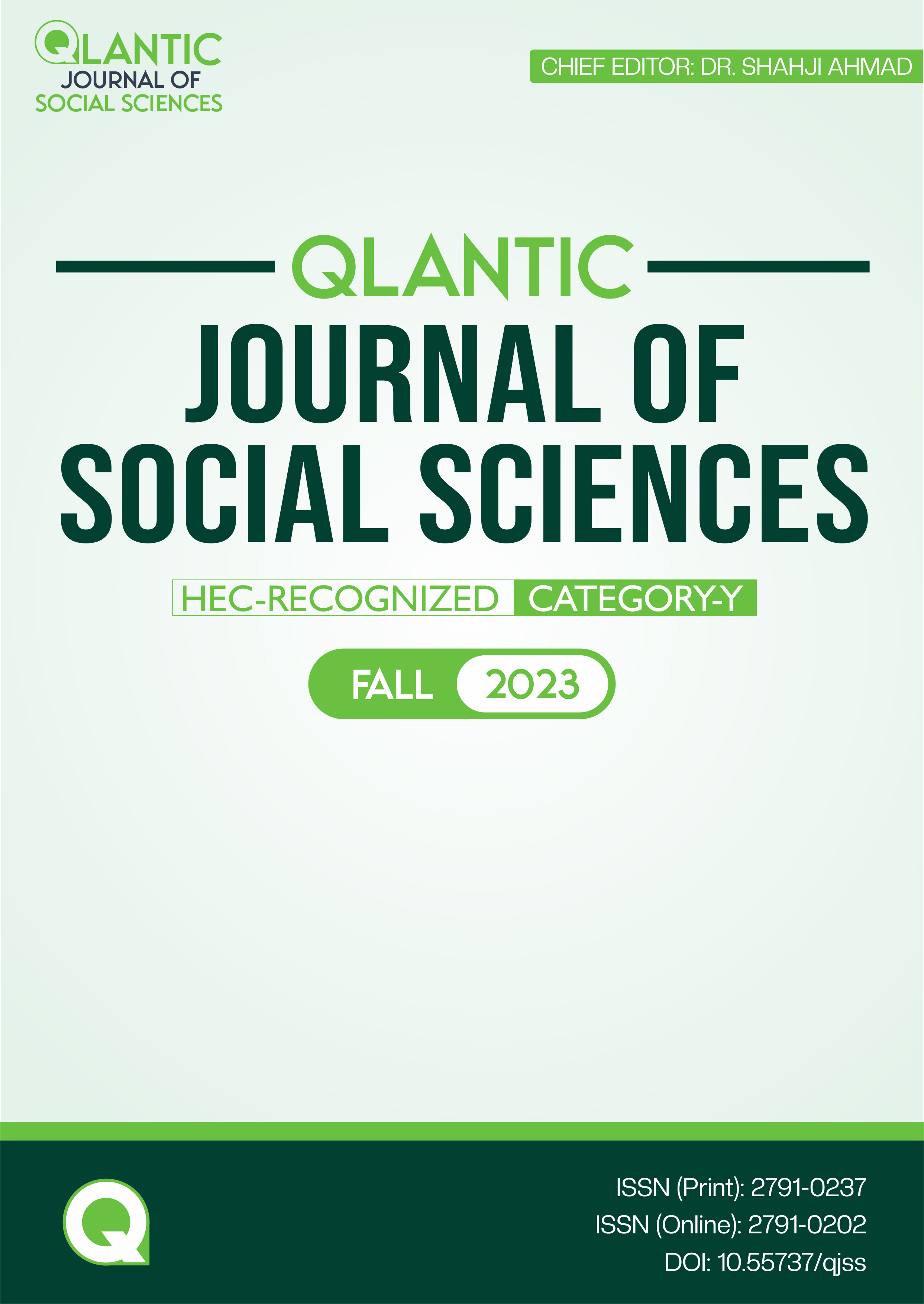Challenges and Potential Opportunities of Tourism in Kumrat Valley, Khyber Pakhtunkhwa
DOI:
https://doi.org/10.55737/qjss.319897332Keywords:
Tourism, Opportunities, Socio-economic, InfrastructuralAbstract
The study examines the potential opportunities and challenges faced by the tourism sector in District Dir, specifically focusing on Kumrat Valley. A sample size of 384 respondents was taken from the population, and data was collected using an interview schedule. The data were entered into SPSS and analyzed using cross-tabulation, Chi-square, and binary logistic regression tests to analyze the association of every impediment of tourism with the potential opportunity of tourism. Moreover, the study adopted a multivariate analysis model to establish the combined effect of all the socio-economic and infrastructural impediments on the potential opportunities of tourism. The study reveals that Kumrat Valley has emerged as a promising tourism destination in recent years, offering a wide range of potential opportunities. However, the area faces significant socio-economic and infrastructural obstacles that impede tourism and restrict tourist flow. These challenges include inadequate infrastructure, damaged road situation of Kumrat, lack of market facilitation to outsiders, insufficient electricity availability, inappropriate ATM and bank systems, and local people's discouragement of women and industrialists from involvement in tourism. To address these issues, the study recommends that the government promote tourism in Kumrat Valley through study-based initiatives. Both government authorities and local communities need to collaborate to overcome these challenges.
References
Alasttal, M. N. M., & Burdey, M. B. (2017). An exploratory analysis of Pakistan tourism market: its present scenario, issues, challenges and future prospects. Grassroots, 50(3), 161-175. https://sujo.usindh.edu.pk/index.php/Grassroots/article/view/1933/1619
ATDI. (2010). Adventure tourism development index report 2010. Seattle, WA: Adventure Travel Trade Association/The George Washington University, USA. https://vitalwave.com/article-presentation/adventure-tourism-development-index-report-2010/
Baloch, Q. B. (2007). Managing tourism in Pakistan: A case study of Chitral valley. Journal of Managerial Sciences, 2, 169–190. https://www.qurtuba.edu.pk/jms/default_files/JMS/2_2/01_qadar_bakhsh.pdf
Campbell, M. J., Machin, D., & Walters, S. J. (2007). Medical statistics: A textbook for the health sciences (4th ed.). Chichester, UK: Wiley.
Chen, C., & Chen, F. S. (2010). Experience quality, perceived value, satisfaction and behavioral intentions for heritage tourists. Tourism Management, 31(1), 29–35. https://doi.org/10.1016/j.tourman.2009.02.008
Creswell, J. (2013). Research design: Qualitative, quantitative and mixed methods approaches (2nd ed.). Thousand Oaks, CA: SAGE Publications
Fakhar, A. H. (2010). Factors affecting tourism, tourism potential and strategies for development as an industry in Pakistan (M.Sc. Thesis). Gävle: University of Gävle
Heskett, J. L., Jones, T. O., Loveman, G. W., Sasser Jr., W. E., & Schlesinger, L. A. (1994). Putting the Service-pro"t Chain to Work. Harvard Business Review, 72 (March-April), 164-174. https://hbr.org/2008/07/putting-the-service-profit-chain-to-work
Karanasios, S., & Burgess, S. (2008). Tourism and internet adoption: A developing world perspective. International Journal of Tourism Research, 10(2), 169-182. https://doi.org/10.1002/jtr.649
Kasim, A. (2011). Balancing tourism and religious experience: Understanding devotees' perspectives on Thaipusam in Batu caves, Selangor, Malaysia. Journal of Hospitality Marketing & Management, 20(3-4), 441-456. https://doi.org/10.1080/19368623.2011.562437
Khalil, S., Kakar, M. K., & ., W. (2007). Role of tourism in economic growth: Empirical evidence from Pakistan economy. The Pakistan Development Review, 46(4II), 985-995. https://doi.org/10.30541/v46i4iipp.985-995
Khan, M. H., Alam, M., & Manzoor, S. (2021). Impediments of Tourism in Dir Lower: The Way Forward. Research Journal of Social Sciences and Economics Review, 2(2), 184-188. https://doi.org/10.36902/rjsser-vol2-iss2-2021(184-188)
Khan, N. A. (2008). Human resource development in tourism industry in India: A case study of Air India Ltd., New Delhi. El Periplo Sustentable, 14, 89. https://doi.org/10.21854/eps.v0i14.944
Murray, N., Quataert, E., & Thompson, T. A. (2009). The disruption of giant molecular clouds by radiation pressure & The efficiency of star formation in galaxies. The Astrophysical Journal, 709(1), 191-209. https://doi.org/10.1088/0004-637x/709/1/191
Ogorelc, A. (2009). Residents’ perceptions of tourism impacts and sustainable tourism development. International Journal of Sustainable Economy, 1(4), 373. https://doi.org/10.1504/ijse.2009.024763
Rogerson, C. (1999). Local economic development and urban poverty alleviation: The experience of post-apartheid South Africa. Habitat International, 23(4), 511-534. https://doi.org/10.1016/s0197-3975(99)00019-3
Thornton, P. H., Ribeiro-Soriano, D., & Urbano, D. (2011). Socio-cultural factors and entrepreneurial activity. International Small Business Journal: Researching Entrepreneurship, 29(2), 105-118. https://doi.org/10.1177/0266242610391930
Tolkach, D. (2016). The constant trends of tourism. CAUTHE 2016: The Changing Landscape of Tourism and Hospitality: The Impact of Emerging Markets and Emerging Destinations, 851.
Uploader. (2019, December 15). US travel magazine lists Pakistan as top tourist destination for 2020. Associated Press of Pakistan. https://www.app.com.pk/national/us-travel-magazine-lists-pakistan-as-top-tourist-destination-for-2020/
Walpole, M. J., & Goodwin, H. J. (2000). Local economic impacts of dragon tourism in Indonesia. Annals of Tourism Research, 27(3), 559-576. https://doi.org/10.1016/s0160-7383(99)00088-2
World Tourism Organization (2019), International Tourism Highlights, 2019 Edition, UNWTO, Madrid, DOI: https://doi.org/10.18111/978928442115
World Travel and Tourism Council. (2017). TRAVEL & TOURISM economic impact. Pakistan.




